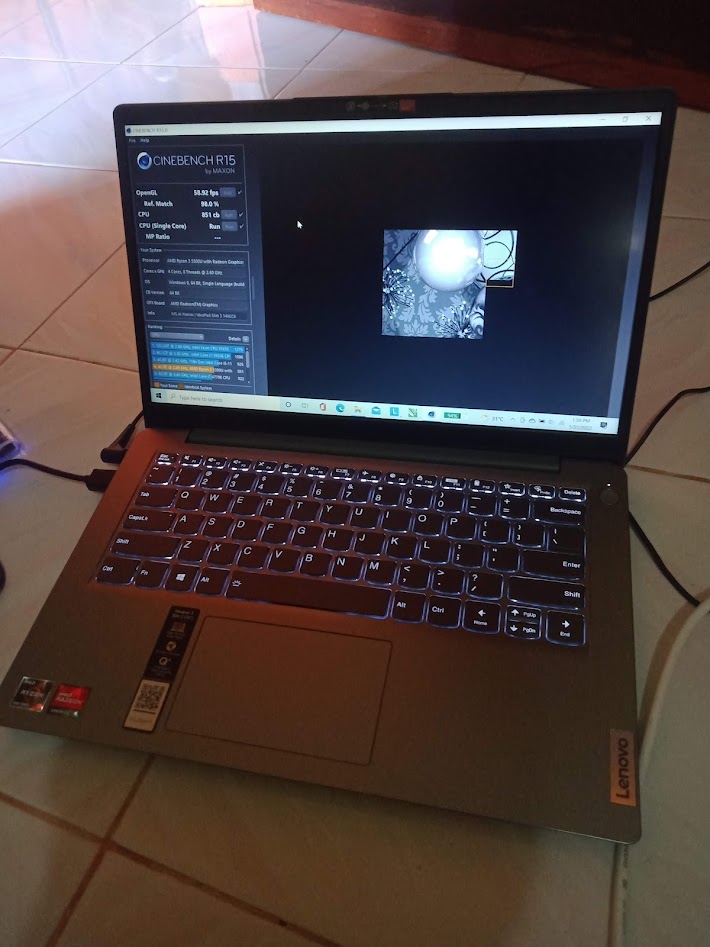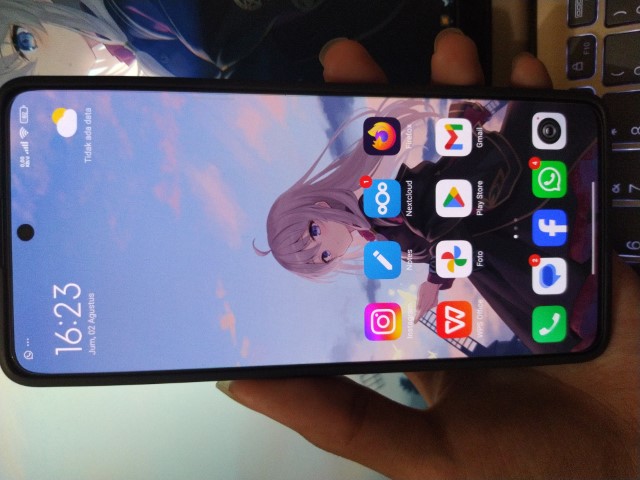Comparing: AMD Radeon Graphics Mobile (Lucienne, 384 Shaders) vs Qualcomm Adreno 710
In this comparison, we analyze two Videocards: AMD Radeon Graphics Mobile (Lucienne, 384 Shaders) and Qualcomm Adreno 710, using synthetic benchmark tests to evaluate their overall performance. This side-by-side comparison helps users understand which hardware delivers better value, speed, and efficiency based on standardized testing. Whether you're building a new system or upgrading an existing one, this benchmark-driven evaluation offers valuable insights to guide your decision.

AMD Radeon Graphics Mobile (Lucienne, 384 Shaders)
| Type: | Videocards |
|---|---|
| Brand: | AMD |
| Model: | Radeon Graphics Mobile (Lucienne, 384 Shaders) |
Specification Comparison Table
This specification comparison presents technical details of several devices or components to help you understand the key differences between each option. Use this table as a reference to determine which device best suits your needs.
| Specification | AMD Radeon Graphics Mobile (Lucienne, 384 Shaders) | Qualcomm Adreno 710 |
|---|---|---|
| Architecture | GCN 5.1 | Adreno 700 |
| Codename | Lucienne | - |
| Buswidth | 128 bit | - |
| Clock | 1500 MHz - - | 800 MHz - - |
| Memory Clock | 2GB DDR4 (SHARED) | - |
| Technology | 7 nm | 4 nm |
| Interface | IGP | IGP |
| Technology | 7 nm | 4 nm |
| Segment | Laptop | Mobile |
Submission Comparison Table
This submission comparison table displays the number and details of benchmark data submissions from various devices or components. This information helps you understand the performance based on the benchmarks that have been tested, as well as providing an overview of the consistency and popularity of the available benchmark results.
Submission Comparison Chart
This chart visualizes the benchmark scores comparison between two hardware devices based on submitted data.
Media Gallery
A collection of photos of tested hardware. These images can help you identify the physical form, model, and variant of the hardware in question. These photos are from our own documentation, and if they are not available we may not be able to document them.
About Hardware AMD Radeon Graphics Mobile (Lucienne, 384 Shaders)
The AMD Radeon Graphics Mobile (Lucienne, 384 Shaders) is the integrated GPU featured in the AMD Ryzen 5 5300U, leveraging the powerful and efficient Vega architecture. This GPU packs 384 stream processors (also known as shaders) running at clock speeds up to 1.5 GHz, striking a fine balance between performance and power consumption. Manufactured using advanced 7nm fabrication technology, it offers excellent energy efficiency, making it an ideal choice for thin and light ultrabooks that require good graphical capabilities without compromising battery life. While it cannot compete with dedicated discrete GPUs, the Radeon Graphics integrated in the Ryzen 5 5300U delivers strong performance for everyday multimedia tasks such as HD video playback, photo editing, and casual gaming.
In terms of gaming, the Radeon Graphics excels in handling popular eSports titles like CS:GO, Valorant, and Dota 2, providing smooth gameplay at resolutions ranging from 720p up to 1080p with low to medium graphics settings. This makes it a great option for gamers on a budget or users who want to enjoy light gaming without the need for an expensive dedicated GPU. When compared to integrated Intel GPUs in the same segment, the Radeon Graphics in the Ryzen 5 5300U generally outperforms them due to the mature Vega architecture and higher number of shaders, offering better frame rates and graphical fidelity.
Despite its strengths, this integrated GPU still faces limitations with modern AAA games that demand more graphical horsepower and VRAM, where a discrete GPU becomes necessary for an optimal experience. Nonetheless, for users prioritizing a balanced performance-to-power ratio in a compact form factor, the AMD Radeon Graphics Mobile on the Ryzen 5 5300U remains a compelling choice for mid-range laptops, offering solid graphics capabilities for daily tasks, multimedia consumption, and casual gaming.
Hardware Detail:
Device: Lenovo IdeaPad Slim 3 14ALC6
CPU: Ryzen 3 5300U
RAM: 8GB DDR4 3200MHz Dual Channel (2x4GB)
OS: Windows 10, Windows 11
Saturday, 12 March 2022 11:04:31 | Update: 1 month ago
About Hardware Qualcomm Adreno 710
Qualcomm Adreno 710 is an integrated GPU (Graphics Processing Unit) used in the Snapdragon 7s Gen 2 chipset. Designed to provide an optimal balance between graphics performance and power efficiency, Adreno 710 is one of the best GPU solutions in the mid-range class, suitable for users who prioritize a smooth visual experience in both everyday use and when playing games and multimedia.
In synthetic benchmark testing using the Xiaomi Redmi Note 13 Pro 5G device featuring the Snapdragon 7s Gen 2, the Adreno 710's performance proved to be competitive. On AnTuTu Benchmark v10, the Adreno 710 achieved a GPU score of 116,839 points, indicating that this GPU can run popular games like Mobile Legends, PUBG Mobile, and Genshin Impact smoothly at medium graphics settings.
Additionally, in Geekbench 6 Compute testing, the Adreno 710 achieved a score of 1,729 points, measuring GPU-based computational capabilities in modern scenarios such as image processing and light machine learning. For gaming benchmarks, the 3DMark Wild Life Extreme, which simulates heavy graphical loads, yields a score of 792 points, while the 3DMark Sling Shot Extreme Unlimited records a score of 4,672 points. These figures indicate that the Adreno 710 is capable of handling games with complex graphics, though for AAA games on mobile, it may be necessary to lower visual quality to maintain frame rate stability.
The Adreno 710 also supports modern graphics APIs such as Vulkan, OpenGL ES, and OpenCL, making it compatible with a wide range of the latest apps and games on Android. Users will also benefit from good power efficiency, as this GPU is built on the same 4nm architecture as the Snapdragon 7s Gen 2 chipset, helping to reduce heat and extend battery life during heavy use.
Overall, the Qualcomm Adreno 710 is an integrated GPU that offers solid performance in the mid-range. It is suitable for users who want to enjoy smooth graphics, seamless multitasking, and optimal battery life without having to sacrifice gaming performance entirely. With the latest technology support and adequate benchmark results, the Adreno 710 is a significant added value to Snapdragon 7s Gen 2-based devices.
Device Test (testbed):
Device: Xiaomi Redmi Note 13 Pro 5G
Specs: Snapdragon 7s Gen 2, 256GB UFS, 8GB RAM
OS: Xiaomi HyperOS 1 (Android 14)
* Testing device in new condition, latest benchmark software, and latest system updates
Wednesday, 09 July 2025 23:18:17 | Update: 1 week ago



